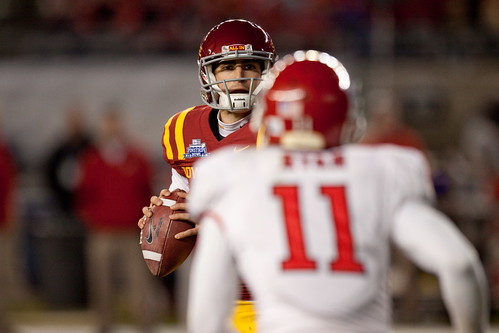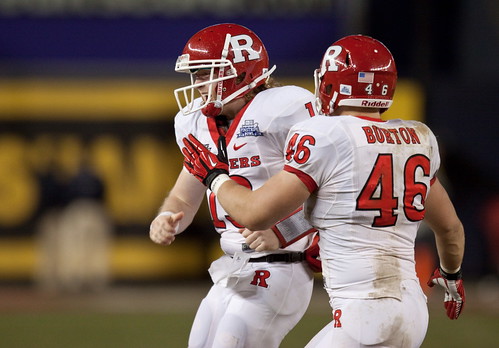Official site of the Avalon Seawatch, Cape May Hawk Migration, and Monarch Monitoring Project:
I took my Canon 50D and 400 5.6L to the Avalon Seawatch today, alternating shooting locations between the 8th Street Jetty and the 11th Street beach. Geographically, Avalon is one mile further out to sea than the resort towns preceding it. (Hence the slogan, "Cooler by a Mile.") The exception is Atlantic City, which is 25 miles up the Garden State Parkway but can be seen clearly from Avalon's 8th Street Jetty. The consequence for birders and bird photographers is that species migrating down the Atlantic Coast by hugging the ocean and/or the shoreline will often move closer to shore once passing A.C., only to be pushed back out eastward as they approach the jetty. Many migrants will pass in front of, close to, or over the jetty when making their move back out near the coastline.
Birds were migrating by the thousands today, especially Double-crested Cormorants, Black Scoters and Surf Scoters. The flocks of Cormorants were constantly streaming over both the beach, jetty and ocean in flocks of up to 100+. They were flying directly over the water and only 10' from the surface of the beach at times.
There was about 10 minutes of sunlight during my four hours there, so most of the photos show a lot of grain when viewed very large and lack the 'pop' and feather detail provided by sunlight. The required processing also served to degrade their quality somewhat, but that was helped by shooting in RAW only.
Photographic opportunities at the Seawatch are dictated by day, weather conditions, and by how much reach you have. The bare minimum lens requirement is 300mm, and even 400mm is not always useful. A 400 is excellent for shooting Double-crested Cormorants, which have little preference for their migration location as long as it is somewhere near or over the Atlantic. They will migrate above the land and marshlands close to shore, over the beach, or directly over the ocean near the shoreline. They will fly as low as 10' over the beach and directly over the water near shore at times. Less commonly, they will migrate approximately 100-300 yards out to sea. Once the middle of October hits, they are frequently seen in Avalon in numbers ranging from a few hundred to upwards of 10,000 per day until migration begins slowing at the middle of November. Some will stop to feed off the jetty. The opportunities to shoot these birds are limited only by your memory card if you have at least 300mm of reach.

Migrating Cormorants, 2011.10.26, 400mm, f/7.1 @ 1/2000, ISO 250
Migrating Cormorants, 2011.10.26, 400mm, f/9.0 @ 1/2000, ISO 400
Migrating Cormorants, 2011.10.26, 400mm, f/5.6 @ 1/2000, ISO 400. I would have stopped down past 5.6 for this flock shot if there was more available light.
The usual birds that surround and occupy the jetty can also be shot with 300-400mm. They consist of sandpipers, ruddy turnstones, and various gulls and terns.
Gull on Jetty, 2011.10.26, 400mm, f/6.3 @ 1/2500, ISO 200.
Ruddy Turnstone, 2011.10.26, 400mm, f/7.1 @ 1/1250, ISO 320, -2/3 EV. I would normally shoot a bird this size at f/5.6 and lower the ISO. I had not changed the setting from shooting a recent flock that flew by the jetty.
On occasion, some of the migrants further out over the ocean will circle the jetty, pause to feed near it, rest atop it, or will stop for a spell on a nearby area of the beach. Today, I was able to capture one of two Great Blue Herons that took a breather on the 11th Street beach while in the process of migrating:
Another GBH circled the jetty for a time, fortunately during the 10 minutes of sunlight:
Beyond the Cormorants, local shorebirds, or resting migrants, shooting at the Seawatch becomes much more difficult without a minimum of 560mm of reach. (I would recommend 700-800mm to shoot all of the species that will be migrating past.) A strong East wind is needed for the scoters to be blown close enough to the jetty to be accessible for shooting with a 400. Scoters prefer to migrate near enough to the shoreline to be clearly visible with the naked eye, but they most often fly far enough out over the ocean that shooting them with only 400mm will do you no good:
This is a very heavy crop of the front portion of the flock in the same photo:
Since Surf Scoter drakes are very photogenic birds with their sky blue eyes and a large orange and white beak against its dark feathers, not being able to properly shoot these birds is disappointing. I saw over 1,000 Black and Surf Scoters today over a 4-hour period, but none came within shooting distance. (During November, a mixed flock of waterfowl will take-up residence around the jetty before moving on. Scoters are included, and they can be shot with 560mm or 400mm if you are very patient or lucky.)
Northern Gannets are another photogenic species that can often be seen from the beach or jetty come October, but they often fly far out over the ocean. Adults are easily spotted by the naked eye from over 100 yards away because of their white feathers. (Juvenile plumage is brown.) As they approach closer, they are easily distinguished from gulls because of the black feathers underneath their wingtips or by their slightly larger size than many gulls surrounding the jetty. I would recommend 700-1200mm if you are intent on shooting Northern Gannet from the Seawatch. I saw approximately three dozen adults and juveniles today, some of which were diving for food.
On a beautiful day last October, I got lucky when an adult Northern Gannet stopped on the jetty in order to observe a juvenile feeding. The bird was very tame and undisturbed by the presence of curious observers:
The following photographs further demonstrate the limitations of 400mm at the Seawatch. Though the lighting was poor today, with 700mm of reach (or even 560) these photographs could have been much more interesting:
TIPS FOR SHOOTING AT THE AVALON SEAWATCH:
1. Bring the longest lens that you are able to borrow, rent, or own. To shoot Double-crested Cormorants, the local shorebirds, or the occasional resting/feeding migrant, a minimum focal length of 300mm on a crop sensor body is required but 400 is preferred. The 500mm 4.0L IS, especially when paired with the 1.4 TC, is the optimal lens because you will be afforded 700mm that can be handled (very carefully) on a heavy-duty monopod. Most shooters prefer to use the 500 on a tripod with a separate head; it is essential for the size and weight of the Canon 600 4.0L IS. Though the Canon 400 4.0 DO IS is a lightweight lens that can be handheld and turned into a 560 5.6 DO IS by using a 1.4x teleconverter, even the good reach provided by this lens may prove to be a disappointment if you wish to shoot the Scoters and other waterfowl migrating further out from the jetty unless a strong wind is pushing the birds west.
If you have access to a private boat, I'd bring a 400 and a 70-200 and anchor at a safe distance from the jetty. The fall and winter seas can be quite rough. Only an experienced, properly licensed captain can make a determination as to whether the seas are appropriate for your vessel.
2. You need not be a morning person to shoot the Seawatch. The sun rises at a position relative to the jetty that early morning migrants over the ocean will be sidelit- and on the wrong side, as well. The lone exception would be the Double-crested Cormorants flying over the jetty or beach, unless you are lucky enough that Common Loons are eating crabs for breakfast in the cove-like area at the start of the jetty. The migrants will be sidelit on the proper side or frontlit by noon.
 The sunrise from the 8th Street Jetty after a storm cleared in early September 2010.
The sunrise from the 8th Street Jetty after a storm cleared in early September 2010.
3. Watch your camera settings. You will be shooting individual birds and flocks, as well as birds with white plumage or darker plumage. Depending on the amount of available light, your aperture, ISO settings and exposure compensation will be changing constantly depending on the number of birds and the color of their plumage.
4. Shoot at low tide if possible. This allows you to get to the end of the jetty, or will allow you to shoot migrants closer to the shore if you are shooting from the beach nearby. The end of the jetty is not accessible at high tide without serious risk to your equipment and yourself, even with relatively calm seas.
5. Make sure your sensor is clean and clear of dust. Otherwise, dust spots will appear if you are shooting flocks in the f/8 - f/13 range. While they can be cloned out, it may be a lot of work depending on how much dust is on your sensor and where.
6. Nothing at the Avalon Seawatch is guaranteed. Migration varies based on weather and wind. There may be days with only several hundred migrants, or days with almost 40,000. You can check years of Avalon Seawatch history using the link of the top of this post. Rain will slow migration, and fog can make taking photographs nearly impossible. Temperatures begin to dip sharply in November.











![[JPG2] IMG_2767](http://farm7.static.flickr.com/6114/6313839862_bd8d68e01e.jpg)
![[JPG3] IMG_2767](http://farm7.static.flickr.com/6043/6313335307_b56e8ca7d3.jpg)











![[JPG] IMG_9354](http://farm7.static.flickr.com/6115/6284929030_d0c0cd360c.jpg)
![[JPG2] IMG_9354](http://farm7.static.flickr.com/6040/6284410793_f0f6689877.jpg)




![[JPG] IMG_0107](http://farm7.static.flickr.com/6035/6284099935_eaed0735bd.jpg)















![[JPG] IMG_2706](http://farm3.static.flickr.com/2266/5801447452_41193496f4.jpg)
![[JPG] IMG_2835](http://farm4.static.flickr.com/3659/5801451578_e11b2d6ca1_z.jpg)
![[JPG] IMG_2988](http://farm6.static.flickr.com/5279/5801452182_ed29809e3f.jpg)
![[JPG] IMG_3043](http://farm4.static.flickr.com/3415/5801476708_88bdcf7a1f.jpg)
